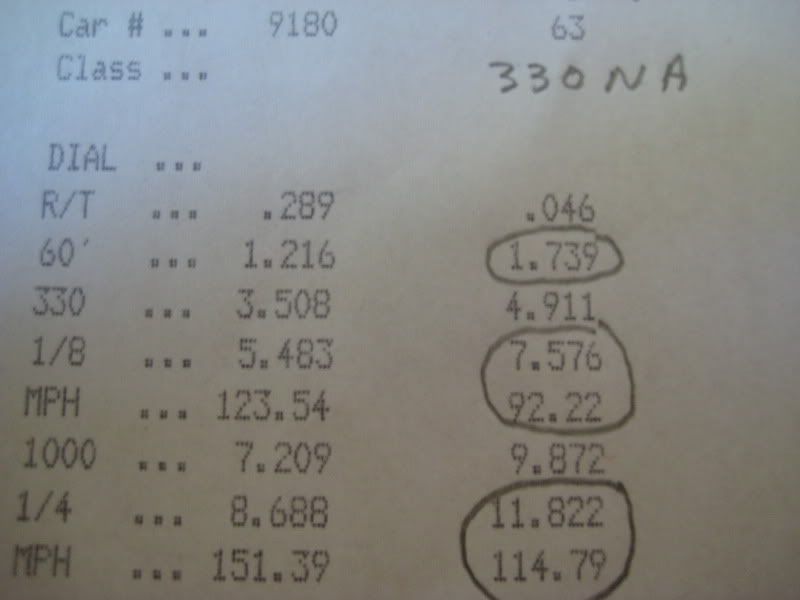PipeMax calculated less required CFM for the same engine. Difficult to get two simulations to line up across the board on values.
The application with the screen shot can be switched to SAE HP at the crankshaft. Doing that lines up the PM predicted HP very nicely using 114%VE value for that engine.
With only chassis dyno information to actually work with. It's a juggling operation to try to get things to line up numerically.
From PM
-Recommended Camshaft Valve Lift-
Minimum Normal Maximum
Intake = 0.371 0.399 0.439
Exhaust = 0.338 0.365 0.401
Max-effort Intake Lift = 0.460
Max-effort Exhaust Lift = 0.420
Minimum Intake Valve Lift to prevent Choke = .399 Lift @ 8000 RPM
Minimum Exhaust Valve Lift to prevent Choke = .365 Lift @ 8000 RPM
PipeMax did a great job of predicting the choke RPM. Actual cam lift was .390" gross.
Minimum Intake Valve Lift to prevent Choke = .399 Lift @ 8000 RPM
Minimum Exhaust Valve Lift to prevent Choke = .365 Lift @ 8000 RPM
Current (Intake Valve Curtain Area -VS- Time) Choke RPM = 7815 RPM
Current (Exhaust Valve Curtain Area -VS- Time) Choke RPM = 8559 RPM
Intake Valve Area + Curtain Area operating RPM Range = 5661 to 7661 RPM
Intake Valve Diameter RPM Range = 5815 to 7815
Intake Flow CFM @28in RPM Range = 6169 to 8169
Actual Port CSA vs PM calculated CSA was not that far off either. [average CSA that is]
Pipemax 101 - Pipemax Program discussion
I raced both Friday and Saturday this weekend. Still running the oversize 750 carb  and set a new low et Friday nite. Went 12.024@ 114.73 with the dragster tires and a jetting of 72/81. Changed the tires to a 28.5 X 10.5 tread X 15 rim and went, well here is the ticket.
and set a new low et Friday nite. Went 12.024@ 114.73 with the dragster tires and a jetting of 72/81. Changed the tires to a 28.5 X 10.5 tread X 15 rim and went, well here is the ticket. 



Big difference in the rpm at the line. It was hitting the 6400 limiter slightly before the finish. Didn't want to loose a rod so opted to not overstress the OEM motor.
Saturday I ran with the Big Tires. Had to return the smaller test tires. Dialed 7.760 and won the first round of Top Et with a 7.765. It got cooler so dropped the dial to 7.750 and it broke out on a 7.7383. May stay with this set up longer now. Have just enough power to make the 7.99 - 0 class range.
May stay with this set up longer now. Have just enough power to make the 7.99 - 0 class range.
Also, might mention that on the second test run it slowed two tenths and I sensed a ignition miss in the pull. So checked the point dwell (cheap meter here) and it was showing 36 degree dwell which meant points were to close. So I reset it to 30 degrees and that cured the problem for the first round win run. I viewed the video for the run and the A/F was leaner on the miss fire run. Up around the 13-14 range for most of the pull. Went down after the dwell point reset according to the round one win video. Point being: the ignition miss fire showed up on the A/F gauge as a lean condition.
Here is Friday's 11.82 run. Do you think it might be getting lean on the top end? Enjoy!

Big difference in the rpm at the line. It was hitting the 6400 limiter slightly before the finish. Didn't want to loose a rod so opted to not overstress the OEM motor.
Saturday I ran with the Big Tires. Had to return the smaller test tires. Dialed 7.760 and won the first round of Top Et with a 7.765. It got cooler so dropped the dial to 7.750 and it broke out on a 7.7383.
Also, might mention that on the second test run it slowed two tenths and I sensed a ignition miss in the pull. So checked the point dwell (cheap meter here) and it was showing 36 degree dwell which meant points were to close. So I reset it to 30 degrees and that cured the problem for the first round win run. I viewed the video for the run and the A/F was leaner on the miss fire run. Up around the 13-14 range for most of the pull. Went down after the dwell point reset according to the round one win video. Point being: the ignition miss fire showed up on the A/F gauge as a lean condition.
Here is Friday's 11.82 run. Do you think it might be getting lean on the top end? Enjoy!
- 200cfm
- Posts: 302
- Joined: Fri Nov 17, 2006 10:52 pm
- Location: Virginia
Might be worth checking your vacuum advance hose. Could be leaking. Might have gotten dis and re connected when you messed with the points.......just a thought.
Larry C
Larry C
- larrycavan
- Site Admin
- Posts: 1183
- Joined: Fri Apr 01, 2005 4:40 pm
Return to Useful Programs & Spreadsheets for flowbenchin'
Who is online
Users browsing this forum: No registered users and 1 guest
